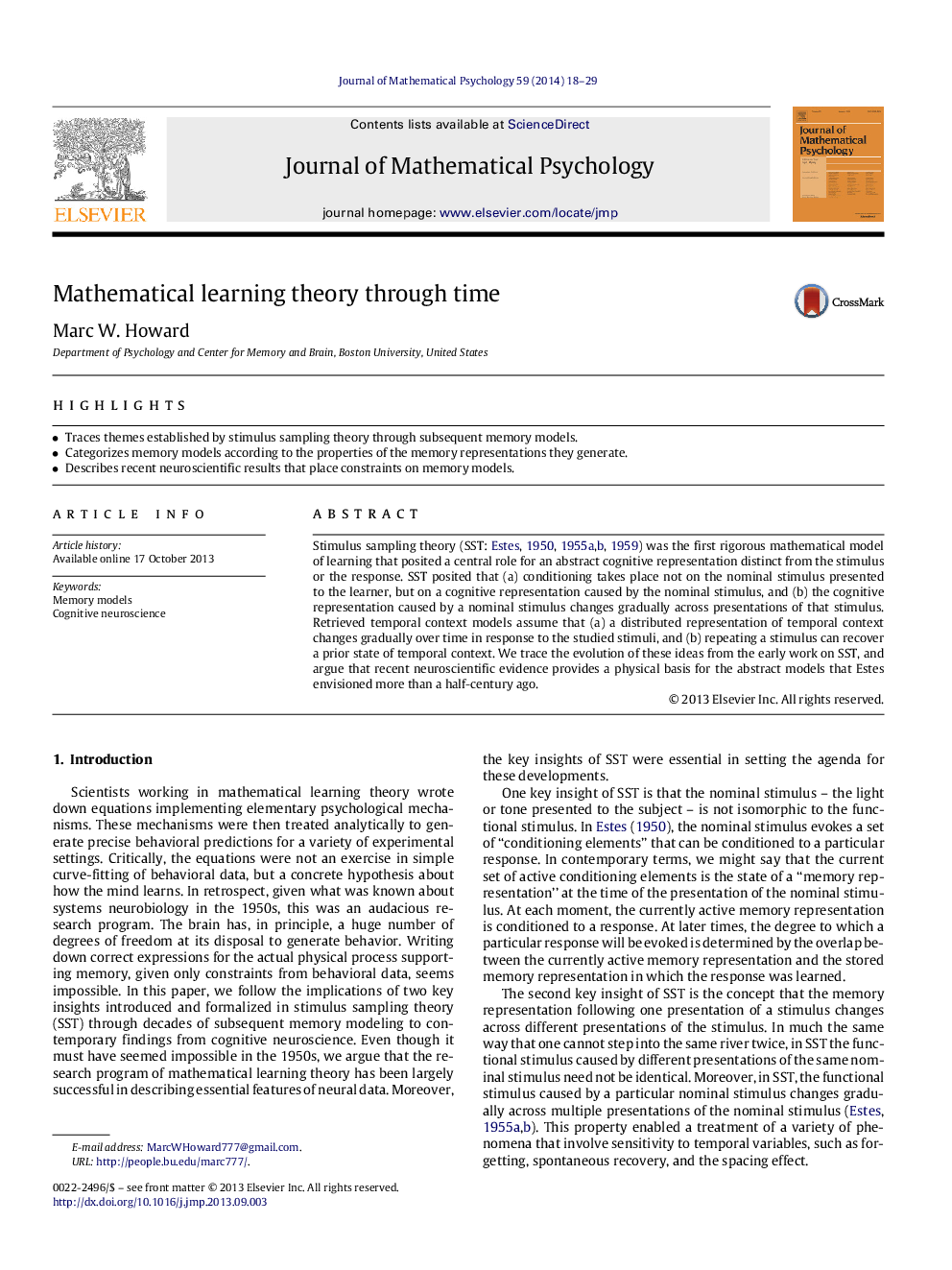| کد مقاله | کد نشریه | سال انتشار | مقاله انگلیسی | نسخه تمام متن |
|---|---|---|---|---|
| 326201 | 542046 | 2014 | 12 صفحه PDF | دانلود رایگان |
• Traces themes established by stimulus sampling theory through subsequent memory models.
• Categorizes memory models according to the properties of the memory representations they generate.
• Describes recent neuroscientific results that place constraints on memory models.
Stimulus sampling theory (SST: Estes, 1950, Estes, 1955a, Estes, 1955b and Estes, 1959) was the first rigorous mathematical model of learning that posited a central role for an abstract cognitive representation distinct from the stimulus or the response. SST posited that (a) conditioning takes place not on the nominal stimulus presented to the learner, but on a cognitive representation caused by the nominal stimulus, and (b) the cognitive representation caused by a nominal stimulus changes gradually across presentations of that stimulus. Retrieved temporal context models assume that (a) a distributed representation of temporal context changes gradually over time in response to the studied stimuli, and (b) repeating a stimulus can recover a prior state of temporal context. We trace the evolution of these ideas from the early work on SST, and argue that recent neuroscientific evidence provides a physical basis for the abstract models that Estes envisioned more than a half-century ago.
Journal: Journal of Mathematical Psychology - Volume 59, April 2014, Pages 18–29
